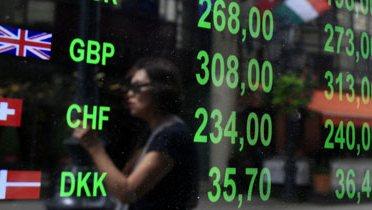Editor’s note: This paper was presented by Eswar Prasad at the annual Jackson Hole Economic Policy Symposium hosted by the Federal Reserve Bank of Kansas City. Prasad discusses
global financial integration and the evolving roles of emerging and advanced markets in the global financial crisis.
INTRODUCTION
The global financial crisis has sparked a reconsideration of the role of unfettered capital flows in the new international economic order. Far from fulfilling their promises of boosting growth and helping to diversify risk, capital flows are now seen by some as a destructive force, causing crises that take down countries and scorch innocent bystanders in their wake. Yet, despite all the opprobrium directed at them, capital flows are resurgent once again. Many emerging markets in fact face the problem of plenty as their strong growth prospects are fueling surges of inflows and creating pressures on domestic inflation, asset prices and exchange rates.
In this paper, I first evaluate recent trends in global financial integration and examine whether the financial crisis has reversed this process. Next, I examine the evolution of the structures of external balance sheets of the major advanced and emerging market economies and evaluate the implications for capital flows and vulnerability to external shocks. Third, I offer a proposal for global insurance that may help emerging markets obviate the domestic and collective costs of self-insurance through reserve accumulation. Fourth, I review the changing complexion of risks posed by capital account openness for emerging markets.
The main points of the paper are as follows:
1. The financial crisis was only a brief pause in the process of global financial integration. External balance sheets are expanding rapidly for virtually all major economies. Rising gross external asset and liability positions imply greater financial integration but also higher capital flow volatility due to currency fluctuations, portfolio rebalancing, and greater exposure to other external shocks. This may increase emerging markets’ demand for insurance against external shocks and balance of payments crises.
2. In the past, foreign-currency external debt dominated the external liabilities of emerging markets. That has now shifted, with FDI and portfolio equity accounting for a majority of liabilities. Even external debt issued by these countries is increasingly denominated in their own currencies. This structure of liabilities is consistent with the objective of sharing risk across countries, with foreign investors bearing capital as well as currency risk on such investment. Emerging markets have thus accumulated enough good karma to cast off their “original sin.” By contrast, portfolio debt and bank loans together still constitute the major share of advanced economies’ external liabilities.
3. The asset positions of emerging market external balance sheets (not just for China) are becoming increasingly dominated by foreign exchange reserves, mostly held in government bonds issued by the four major reserve currency areas (U.S., Euro Area, Japan, U.K.). The recent global financial crisis has, if anything, accentuated the incentives for accumulating reserves for self-insurance purposes that will keep foreign demand for these bonds strong.
4. Sovereign debts of the major reserve currency areas are on steeply increasing trajectories, with a substantial fraction of the global increase in central government debt over the next five years likely to be accounted for by advanced economies, especially the U.S. and Japan. As the safety of these assets comes into question, the risk on emerging market balance sheets has now shifted mostly to the asset side. These countries may be forced to rethink the notion of advanced economy sovereign assets as being “safe” assets, although they are certainly highly liquid.
5. Self-insurance by countries through accumulation of ostensibly safe assets is becoming increasingly costly. The quasi-fiscal costs of sterilizing reserve accumulation and the welfare costs of financial repression are likely to rise as the demand for financial capital increases worldwide. Moreover, the high debt levels of advanced economies imply crowding out of private investment and lower productivity growth in those countries relative to the emerging markets. This implies that emerging market currencies are eventually going to appreciate against those of the advanced economies, which implies a significant wealth transfer (in nominal domestic currency terms) in the future from the former group of countries to the latter.
6. Emerging market economies need a simple insurance mechanism that is characterized by ex-ante rather than ex-post conditionality in terms of a country’s macroeconomic policies, does not involve the stigma associated with the IMF, and involves an unconditional payout at a time of a balance of payments crisis. To minimize moral hazard, the mechanism should offer insurance against liquidity risk rather than solvency risk. I offer a proposal that satisfies these criteria.
7. For emerging markets, the major risks from capital inflows are now less about balance of payments crises arising from dependence on foreign capital than about capital inflows accentuating domestic policy conundrums. For instance, foreign capital inflows can boost domestic credit expansions, a factor that made some emerging markets vulnerable to the aftershocks of the recent crisis. New risks from capital account opening are related to existing sources of domestic instability–rising inequality in wealth and in opportunities for diversification and sharing risk. Capital inflows and the resulting pressure for currency appreciations also have distributional implications as they affect inflation and adversely affect industrial employment growth. The right solution to a lot of these problems involves financial market development, especially a richer set of financial markets that would improve the ability to absorb capital inflows and manage volatility, broader domestic access to the formal financial system (financial inclusion), and improvements in the quality of domestic institutions and governance.




